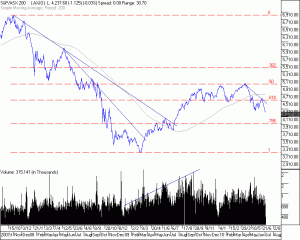Firstly my thoughts go to all those effected by poor financial practices of Storm Financial, Opes Prime and of recent days Sonray Capital Markets. It is beyond my scope to accuse individuals without all the facts but the question remain, how could this happen?
All three seemed to have different investment models, but one common thread persists, they all failed to protect their clients from loss. With any investment there is risk, and as investors we should accept that. The higher the potential return the higher the potential losses, disastrous outcomes arise when leverage is used to out-gear the asset base without the proper protection.
I’m not entirely familiar with storm, but reports suggest the strategies they implemented was to get clients to increase debt on assets to give them more resources to invest, thus increasing fees. This was done to a level where some clients had no possibility of covering fees when the investments turned bad.
For opes prime, clients were encouraged to take out equity financing arrangements to buy shares, typically in companies in the highly speculative mining and technology sectors.
Unlike traditional margin lenders, who typically only lend money against blue chip or heavily traded stocks, Opes Prime arranged for its clients to borrow to invest in companies outside the S&P/ASX 300 Index. Some of the companies had market capitalisations of less than $200 million.
In return, Opes Prime required clients to hand over control of their entire portfolios, regardless of the degree of leverage.
Sonray also used a common asset base, within client segregated trust accounts. Their model allowed for a 60% margin lending facility on top 200 shares, whether or not the clients used this facility. This margin was able to be used on electronic products, namely CFD’s and Forex – each using high leverage.
So for a $10 asset, 60% margin loaned gives the client $6. The $6 loan could be used to leverage into $60 of CFD’s or $500 of forex. This model is fine when trades are on the right side of the market or use an appropriate risk management strategy, but things go horribly wrong when traders are on the wrong side of the market – creating both a shrinking asset in the share plus leveraged losses on the cfd or forex position.
Recent news indicates a “rogue trader” was the issue with Sonray. It is unclear whether the trader was in the employment of Sonray, but I would suggest it was, that would be the only way to hide the damage for so long. My assumption is that trades went bad inside discretionary accounts and rather than take the loss and potentially loose the client they tried to trade out of it, getting further and further into a hole.
I feel sorry for the hard working people who have lost genuine assets due to the incompetence of others, losers also include staff at these firms and their families, most I am sure were unaware of any impropriety.
Most casualties are the innocent.
References:
http://www.theaustralian.com.au
http://www.abc.net.au/

